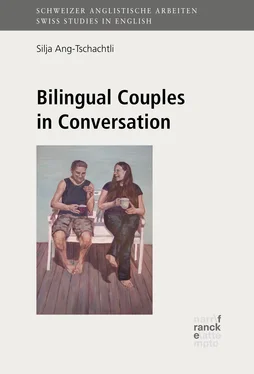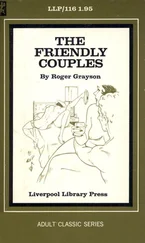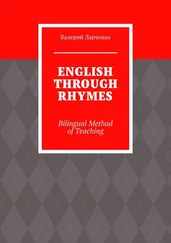In order to answer these questions, I give a detailed account of several areas, investigating various aspects pertaining to each of these areas. On the one hand, I use qualitative research methods to give an overview of the couples’ language, experiences, thoughts, and attitudes towards a variety of aspects pertaining to their bilingual, bicultural relationships. Hence, I look at which language(s) the couples choose to communicate in what situations, what the reasons for this choice are and how and why their couple language has evolved over the course of their relationship. This includes their language mixing and factors that influence their mixing behaviour. I also consider the interviewees’ attitudes towards various aspects of their bilingual, bicultural relationship and the manner in which they deal with expressing positive and negative emotions in their second language. Moreover, I look at the bilinguals’ reported language preference for swearing, their emotional attachment to swearwords in both languages and their reactions to their partner’s use of swearwords. I also discuss the challenge of conveying and understanding humour in a second language, as well as the role of humour and playful language in the couples’ communication. All of these areas are explored by means of a content analysis as well as a close linguistic analysis of the couples’ speech and interaction.
On the other hand, I use quantitative research methods to investigate a number of hitherto rather neglected areas in the language of fluent bilinguals. I examine the bilinguals’ language switches with regard to a variety of features and determine whether there are any differences in the participants’ mixing behaviour arising from their mother tongue or their gender. I explore the manner in which they convey positive and negative emotions during the interviews, and look at the frequency with which they use emotion words, the suprasegmental features and terminal pitch accompanying emotion words, and the correlation between the use of emotion words and the bilinguals’ gender and mother tongue. Moreover, I examine their use of swearwords during the interviews and the role which their mother tongue and gender play in their swearing behaviour. Finally, I also look at who and what triggers laughter in the bilinguals’ speech, their use of laughing and smiling voice quality, similarities in the partners’ laughing behaviour and humour styles, but also differences in their laughing behaviour based on their mother tongue and gender.
Thus, my study encompasses both the analysis of participants’ actual language use and modes of communication as demonstrated in the interviews, and the analysis of the couples’ own reports about their linguistic behaviour and their relationships. Throughout, I tend to follow a grounded theory approach, taking my own material as the basis from which I observe behaviours and set up taxonomies, albeit bearing previous findings in mind, rather than superimposing existing theoretical frameworks onto my material. In my analysis, I explore intercultural, linguistic, as well as self-reflective and psychological aspects. This combination of different research methods and the broad range of topics that are examined will ensure a comprehensive picture of the modes of communication utilized by the bilingual couples.
Of course, the communication between any two people is so complex that it would be impossible to give a complete account of it, and it has been necessary to omit certain aspects. For instance, nonverbal communicationnonverbal communication such as facial expressions, eye-contact, and other elements of body languagebody languagenonverbal communication, are not considered in the analysis, as, on the one hand, this would have exceeded the scope of this book, and, on the other hand, I wanted the interviewees to feel comfortable and speak as naturally as possible, and a camera might have made them feel more self-conscious than an audio recordingrecording device. All aspects of conversational analysis are thus based on their verbal expression and prosodic featuressuprasegmental featuresprosodicparalinguistic featuressuprasegmental features featuresprosodic featuressuprasegmental features alone. Moreover, the issue of conversational breakdowns is not considered, and the topic of the construction of couple identity as well as cross-cultural identity in bilingual couples are not explored at length, as this has already been examined elsewhere (see Piller 2002a; Gonçalves 2010a, 2013).
Thus, the main focus of my analysis is on a selection of aspects I believe to be of particular interest about this specific combination of languages and cultures, and about couples with such a high level of proficiency in the relationship language. This narrow focus entails that no universal statements about the communication in bilingual relationships can be made based on this research. In my opinion, however, this does not represent a problem. As Okita puts it, a small-scale study may not aim to make “ empirical generalisations ”, i.e. generalisations from a sample “to a wider population, based on [the] representativeness of the sample”. Rather, it should aim for “ theoretical generalisation , an explanation of how and why things happened in specific settings, and identifying the key explanatory factors in the process, from which questions can be asked about ‘lessons for other settings’, or wider resonance ” (2002: 62, emphases in original). Thus, even though the results of this study may not be representative for bilingual, bicultural couples in general, they still give us an understanding of how bilingual couples with these specific parameters communicate. The study reveals that there are countless variables that factor into each couple’s language and into each instance of bilingualism. But precisely because there are myriad forms of bilingualism, it is important to examine individual cases such as these in order to further our understanding of all facets of bilingualism.
This book is structured as follows. To begin with, I present a short overview of the language situation in Switzerland, which is the place of residence of the couples in this book ( chapter 2). The linguistic makeup of the country is rather complex, partly due to its multilingualism, but also due to the diglossic situation in the German-speaking part of the country. I also describe the role of the English language in Switzerland, both as an influence on local varieties and as an important language in education, tourism, and commerce. This contextual information is important, as the attitudes and language ideologies attached to these different varieties may be an important factor with regard to the couples’ language choice.
In the subsequent chapter, I give an overview of previous work on bilingual, bicultural couples, and define some important terms with reference to biculturalism and bilingualism ( chapter 3). For the sake of clarity, I discuss research on bicultural and on bilingual couples separately, as although the two are closely related, most research concentrates on one or the other. In each part, I also present an outline of the challenges bilingual, bicultural couples may face. In this chapter, I only discuss general aspects of research on bilingual, bicultural couples. An overview of more specific studies in the areas which are examined in this book is offered in the corresponding chapters.
Chapter 4describes the sample and research methods. I present an overview of the most important information relating to each interviewee, as well as a short biography of each couple. In addition, I outline my interviewing methodology and the design of the questionnaire that formed the basis of the interviews. The transcription conventions are also described, as well as the software used for transcribing the interviews and analysing the data. The chapter also includes a discussion of the difficulties that I encountered during the process of data collection and analysis.
Читать дальше












